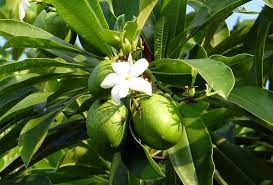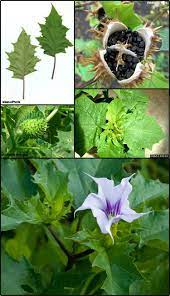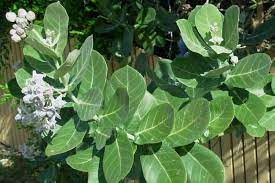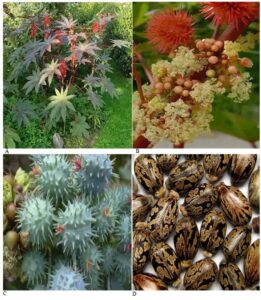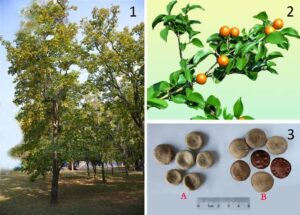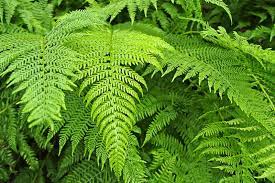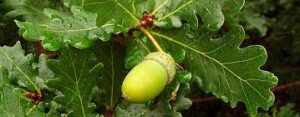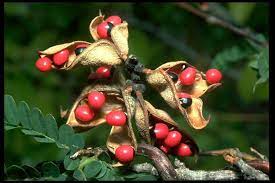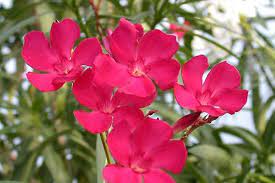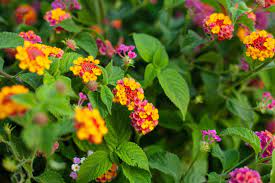Plant Poisoning their Identification and Treatment in Indian Animals
A poison is a substance which, when administered, inhaled or ingested, is capable of acting deleteriously on the human body. Thus, there are really no limits, between a medicine and a poison, for a medicine in a toxic dose is a poison and a poison in a small dose may be a medicine means, it depends on dose/quantity only. Poisonous plants are those which cause serious problems or even death occur, if a small quantity of its stem, leaves, seeds, fruits and roots are ingested. Some other plants are normally harmless but they may become toxic if preparative from them are taken in excess in strong doses or for a long period of time. In India environmental conditions varies throughout the year resulting in lack of availability of feed and fodders throughout the year. The peoples are not very aware about toxic content of plants so the plant poisoning is very common. So at least little knowledge should have about the toxin, toxicity and their treatment of plants which found nearby them is necessary to control plant poisoning in animals.
With the evolution of life on earth millions of years ago, certain plants began to develop toxic or repugnant substances that protected them and made them distasteful to many mammals including man. As a result of this evolutionary process, poisonous plants were able to survive because they induced discomfort to anyone that disturbed them. About 18-20 thousand flowering plants present in our country, many plant species are utilized as food, fodder, medicine and fibre. Quite a few flowering plant species are poisonous. Knowledge on poisonous plants is important as some of them are used in medicine. The poisonous properties are due to toxic substances such as alkaloids, glucosides, saponins, amines, tannins, resins, etc. Poisonous plants are plants that produce toxins that deter herbivores from consuming them. Plants cannot move to escape their predators, so they must have other means of protecting themselves from herbivorous animals. Some plants have physical defenses such as thorns, spines and prickles, but by far the most common type of protection is chemical.
Many plants commonly used as food possess toxic parts, are toxic unless processed, or are toxic at certain stages of their lives. Some only pose a serious threat to livestock. Most of these food plants are safe for the average adult to eat in modest quantities. Poisonous plants are plants that contain harmful toxins in high enough concentration that can cause serious injuries if they are ingested or touched. They can be found everywhere from flower and vegetable gardens, in crop fields, in areas where there are ornamental trees, in homes where there are household plants and in pastures where animals graze. The severity of the poisoning depends on the quantity of the plant eaten, the part of the plant eaten, the season in which the plant eaten, the age of the plant, the ground moisture, the health of the animal prior to consuming the plant and the size and age of the animal. Young animals are generally more susceptible to plant poisoning than older animals. Older animals, can consume enough poisonous plants to build-up resistance to these toxins after being exposed to small quantities overtime.
Why Do Animals Consume Toxic Plant Materials?
In most instances, ruminants will resort to eating toxic vegetation and chemicals when there is a shortage of food and if their ration is unbalanced. Goats in this situation may crave for nutrients that they are missing. To compensate for these deficiencies, goats may consume vegetation and chemicals they would normally not eat. The stocking rate for pastures should be 7-10 goats/sheep per two acres for a year-round basis. The number of goats can be increased in these areas, but this will depend on the quantity and quality of the vegetation that is available. Also, provide supplements for the herd during the drought. This may include hay, feed or grain and make sure you have plenty of fresh water for the goat herd. Animals may also ingest chemicals and toxic plant materials out of curiosity or if they have access to yard wastage. Animals that are fed discarded plants or other toxic substance are at risk for poisoning. Therefore, it is best to keep the herd away from areas where there is yard waste to prevent accidental exposure to toxic roots, leaves or seedlings. Pastures that have been recently plowed must be checked for exposed poisonous roots which could make a good meal for the goat herd.
Symptoms of poisoning
Symptoms of poisoning may range from showing no signs of illness to showing symptoms of bloat (swollen abdomen), lameness, cries of pain, colic, frothing of the mouth, severed digestive disturbance, sunburn, listless, weight loss or death. Toxic plants and different chemicals can also cause irreparable damage to the liver and kidneys as well as lower the glucose level in the body, interfere with blood clotting, prevent cell division, affect the immune system or affect the skin and eyes of the animal if they come in contact to certain toxic plants. Therefore, early diagnosis can mean the differences between life or death.
| Common Name | Botanical Name | Toxic principle | Predominant Clinical Signs |
| Plants containing cyanogenic glycosides | |||
| Johnson grass Sudan grass | Sorghum spp. | HCN | Dyspnea, Sudden death |
| Arrow grass | Triglochin spp. | ||
| Choke cherry | Prunus spp. | ||
| Christmas berry | Heteromeles arbutifolia | ||
| Nitrate poisoning Plants | |||
| Annual weeds | Nitrate | Dyspnea, Sudden death | |
| Grasses | |||
| Cardiotoxic plants | |||
| Avocado | Persea americana | Persin | Mastitis, cardiac failure |
| Oleander | Nerium oleander | Nerin | Cardiac arrhythmias, death |
| Milk weeds | Asclepias spp | Cardenolides | Arrhythmias, nervous signs, death |
| Yew | Taxus spp. | Taxine | Sudden death |
| Dogbane, Indian hemp | Apocynum spp. | Cymarin | Arrhythmias |
| Nephrotoxic Plants | |||
| Halogeton | Halogeton glomeratus | Oxalates | Renal failure |
| Oak | Quercus spp. | Gallotanins | Gastro enteritis, Renal failure |
| Greasewood | Sarcobatus vermiculatus | Oxalates | Renal failure |
| Neurotoxic Plants | |||
| Lupine | Lupinus spp. | Anagyrine | Nervous signs, teratogenic |
| Locoweeds | Astragalus/Oxytropi s spp. | Swainsonine | Neurologic signs, congenital defects |
| Poison hemlock | Conium maculatum | Coniene | Death |
| Water hemlock | Cicuta spp. | Cicutoxin | Respiratory depression, death |
| Burrow weed | Isocoma spp. | Tremetol | Muscle tremors, weakness, death |
| Teratogenic plants/abortions | |||
| Lupine | Lupinus spp. | Anagyrine | Congenital deformities |
| False hellebore | Veratrum spp. | Cyclopamine | Cyclopia, fetal tracheal agenisis |
| Tree tobacco | Nicotiana glauca | Anabasine | Cleft palate |
| Rhododendrons | Rhododendron spp. | Andromedotoxin | Abortions |
| Photosensitization/Liver diseases | |||
| Fiddleneck | Amsinckia spp. | Pyrrolizidine alkaloids Hypericin | Liver failure, photosensitization Photosensitization |
| Rattle pod | Crotolaria spp. | ||
| Hound’s Tongue | Cynoglossum officinale | ||
| St John’s wort | Hypericum perforatum | ||
| Spring parsley | Cymopterus watsonii | Furanocoumarins | Photosensitization Liver failure, death |
| Horsebrush | Tetradymia spp. | Unknown | |
| Cocklebur | Xanthium spp. | Carboxyactractyloside |
List of common poisonous plants and their potential toxic effects
| S. No. | Plant Name | Common name | Adverse effects |
| 1 | Abrus precatorius | Chirmi | Seed powder is given to cattle in case of constipation but if given in higher doses or seeds are consumed accidentally by cattle, it causes gastrointestinal irritation, nausea, vomiting, severe diarrhoea, weakness, trembling of legs |
| 2 | Argemone mexicana | Satyanashi | Seeds are emetic and narcotic; poisonous if taken in large quantities. The plant when eaten by animals causes diarrhoea and sleepiness |
| 3 | Datura metal Linn | Dhatura | Whole plant is toxic and narcotic; seeds are poisonous and used for committing crimes. Intake of the leaves, fruits and seeds causes fatal poisoning, dryness of throat, giddiness, hallucination and staggering; voice is unrecognizable and vision is affected and leads to coma |
| 4 | Agave spp | Century plant | The juice of several species causes acute contact dermatitis, with blistering lasting several weeks and recurring itching for several years thereafter |
| 5 | Euphorbia hirta | Dudhi | Plant extract has sedative effect on the mucous membrane of the respiratory and genitourinary tract. The latex is injurious to eyes |
| 6 | Areca catechu | Betel nut palm | The nut contains an alkaloid related to nicotine which is addictive. It produces a mild high, some stimulation, and much red saliva, which cannot be swallowed as it causes nausea. Withdrawal causes headache and sweats. Use is correlated with mouth cancer, and to a lesser extent asthma and heart disease |
| 7 | Melia azedarach | Bakain | Poisoning most often results from ingestion of toxic fruits containing uncharacterized resinous fraction. It causes severe irritation, nausea and degeneration of the liver and kidney |
| 8 | Moringa oleifera | Sainjna | Root bark extract causes severe skin inflammation and skin dermatitis. Root and stem bark are used as abortifacient |
| 9 | Nerium indicum | Lal kaner | Root is poisonous; used for criminal and suicidal purposes; seeds are used to poison and kill enemy’s livestock |
| 10 | Parthenium hysterophorus | Gajar ghas | Seeds and plants cause eczema and allergic dermatitis on contact. If consumed by livestock, causes severe diarrhoea followed by death with severe ulceration in the liver, gastrointestinal tracts and kidney. It poses danger to the livestock particularly in drought condition |
| 11 | Ricinus communis | Arandi | Intake of higher doses of seed oil is fatal with symptoms of vomiting, colic, gastroenteritis and circulatory collapse; in small quantity cure constipation |
| 12 | Cascabela thevetia | Yellow oleander | All parts of the plant are toxic to most vertebrates as they contain cardiac glycosides. Many cases of intentional and accidental poisoning of humans are known. |
| 13 | Digitalis purpurea | Foxglove | The leaves, seeds, and flowers are poisonous, containing cardiac or other steroid glycosides. These cause irregular heartbeat, general digestive upset, and confusion; can be fatal. |
Identification of some common poisonous plants
- Abrus precatorius
- Argemone mexicana
- Datura
- Agave spp.
- Euphorbia hirta
- Areca catechu
- Melia azedarach
- Atropa belladona (deadly nightshade, belladonna, devil’s cherry)
- Nerium indicum
- Ricinus communis
- Cascabela thevetia
- Digitalis purpurea
What We Can Do?
When you are placing the herd in a new grazing area, always check the pastures or woods for poisonous plants and backyard and industrial wastes. It is important to note that most woodland or swampy ground pastures contain poisonous plants that can be accidentally consumed by the animals. The toxins may be found in the seedlings, leaves, roots, young shoots fruit or the entire plant. In some cases, only certain parts of the plant may be toxic and the concentration of the toxins may vary from season to season and from year to year.
So, learn which plants are toxic on your farm and when they can become a threat to your livestock. Other ways the herd can be poisoned on the farm may include exposure to the following:
(1.) creosote-treated wood, (2.) anti-freeze, (3.) rodent poisoning, (4.) herbicides, (5.) insecticides, (6.) lead paint, or from (7.) overdosing them with their medications, (8.) consuming excessive grain and (9.) nitrate poisoning from releasing the herd on freshly fertilized pastures.
Primary and effective management of an acutely poisoned animal
On arrival of a patient with poisoning, the initial priorities are the maintenance of airway, breathing and circulation. Keep all of the other potential poisonings out of the reach of all farm animals. If you suspect your animal has been poisoned do the following:
(1.) Prevent further exposure to the poisoning, (2.) Isolate the animal and provide fresh water, (3.) Avoid stressing the animal, (4.) If possible, keep samples of the toxic substance for further diagnosis and (5.) call a veterinarian for immediate diagnosis and treatment.
Some Plant Poisoning their identification
- Suicide Tree’ or Cerbera odollam
The ‘suicide tree’, according to scientific reports, is responsible for killing many animals in India by poisoning. The plant grows all across India and is quite infamous for its sinister qualities. In Kerala, half of the deaths due to poisoning are contributed to Cerbera. The kernels of the plant, the most poisonous parts, have an extremely bitter taste. However, if mixed with spices and other spicy foods, it easily disguises the bitterness. The kernels hold the death toxin, cerberin. Cerberin is a cardiotoxin which blocks some ion channels of the heart, stopping the heartbeat. Nausea, vomiting and abdominal pain are the primary symptoms of cerberin poisoning. This is followed by worsening of symptoms like diarrhoea, dilated pupils, heart burning, headache, coma and finally death within 3-6 hours. Treatment- There is no specific treatment. Remove cattle from source as soon as possible. Only supportive treatment available based on symptoms on animals. Symptomatic treatment with cardio tonic drugs.
- Datura stramonium
Almost all parts of the Datura plants can kill animal. The plant is laden with dangerous poisons like hyoscyamine, atropine and scopolamine, overdose of which could lead to fatal consequences. The symptoms include delirium, amnesia, lowering of heartbeat, hyperthermia, pupil dilation with painful photophobia, bizarre behaviour and at high doses, death. Treatment- Treatment is symptomatic, antidote of atropine like physostigmine can be used with caution.
- Calotropis gigantean
Used for malicious killing of animal. A shrub usually found in crop field and waste land. All parts of plant is toxic. It is not palatable but due to accidentally it can be ingested. The toxic principles are glycoside calotropin, gigantin and uscharin. Following oral administration it’s leave and fruit cause severe gastro enteritis and cardiac arrhythmia and death due to cardiac arrest. Treatment- Remove the source. Symptomatic treatment with cardio tonic drugs.
- Ricinus communis–
The seeds of Ricinus communis or the castor plant, contains ricin, one of the most potent toxins of the natural world. The castor bean contains two toxin, the ricin and RCA (Ricinus communis agglutinin). Ricin is the more dangerous toxin as it is easily absorbed by the intestinal wall which is not the case with RCA. The symptoms involve nausea and vomiting, bloody diarrhoea, severe dehydration, pain in the abdomen, drop in blood pressure and urine. Treatment- Treatment consists of giving antiserum from previously hyper immunised animal. Removal of poison through gastric lavage or saline purgative. Fluid and electrolyte therapy, saline diuretic and urinary alkalizer.
- Strychnos nux-vomica—
Strychnine is an alkaloid poison derived from the Strychnos nux vomica tree. It has been used since the early 16th century as a rodenticide. Strychnine prevents the proper functioning of the chemical messenger system of the body, producing painful muscle spasm and in lethal doses, loss of the ability to breather followed by death. Fear and agitation, painful muscle spasms, tight jaws, breathing difficulties and darkened urine are some of the symptoms of strychnine poisoning Treatment- Treatment of toxicity is symptomatic, anticonvulsant and central muscle relaxant can be used. Morphine and Ketamine is contradicted. General antidote is used to neutralize the alkaloid poisoning and useful to reduce the absorption of Strychnine in GIT.
- Bracken fern–
Ingestion of bracken over several weeks when pasture is sparse can lead to toxicity. Acute disease and death in cattle can result following ingestion of young bracken fronds causing bone marrow suppression, loss of blood cells and clotting factors. Ingestion of bracken over many months (once used as bedding material for cattle) can lead to bladder tumours in older (beef) cows, and much less commonly tumours in the oesophagus and rumen. the toxic principle thiaminase in breaken fern. It blocks the Vitamin B1 thiamine and aplastic anaemia. Treatment- Tiamine supplementation in horse and pig (thiamine @100 mg sc twis a day) but no use in ruminants. The most effective treatment in cattle is blood transfusion with 3% sodium citrate.
- Oak (Quercus) poisoning—
Acorns from Quercus spp. can present a serious problem on pastures with oaks after autumn storms. Tannins in acorns cause serious, often fatal, kidney damage. Sudden deaths may occur but anorexia, depression and bloat due to ruminal stasis are more common signs. Initially there is constipation and associated straining progressing rapidly to foetid tarry diarrhoea. Death follows within 4-7 days despite supportive Treatment. Treatment- Polyethelene glycol is antidote of tannin. Also supportive treatment includes large volumes of intravenous fluids which are prohibitively expensive. Remove cattle from pasture with oaks especially after autumn storms or heavy acorn falls.
- Abrus precatorius—
Commonly known as jequirity, Crab’s eye, or crab’s eye creeper and rosary pea, The plant is best known for its seeds, which are used as beads and in percussion instruments, and which are toxic because of the presence of abrin. Abrin cause haemagglutination in body. Ingestion of a single seed, well chewed, can be fatal to both adults and calve. Abrus seeds are the agents by which the native skinner of India carries on the felonious poisoning of cattle for the purpose of securing their hides. This is done by means of small spikes, called sui (needles) which are prepared by soaking the sui in a thin paste of the water-soaked, pounded seeds, and then drying the weapon in the sun, after which it is oiled and sharpened upon stone, affixed in a handle, and then used to puncture the skin of the animal. Treatment- No specific antidote available, Remove the source as soon as possible. Emesis, gastric lavage, demulcents and saline purgative can be used to remove source and infusion of fluid and electrolytes should be given.
- Nerium oleander—
All parts of the N. oleander plant are toxic. Cardiac glycosides, the known toxins, are found in the roots, stems, leaves, flowers, seeds and fruit as well as sap, plant nectar and even water in which oleander leaves have been floating. Roots and stems contain the highest amount of toxin, with the amount in leaves and flowers following closely behind. Interestingly, the total cardiac glycoside content is reported to be highest in plants with red flowers. A number of different cardenolide glycosides have been identified in N. oleander, with some references suggesting there may be as many as 30 separate glycosides. Oleandrin, however, with a mechanism of action similar to digoxin or digitoxin, remains the most widely recognized cardiac glycoside in most scientific papers. Toxicity signs are vomiting, abdominal pain, diarrhoea, tenesmus, cardiac arrhythmia, heart block and tachycardia. Treatment- Remove the source as soon as possible and Cardio tonic drugs can be used.
- Lantana camara—
Lantana camara, is a weed of national significance and threatens stock through its toxicity. All lantana should be treated as poisonous to stock. Red flowered varieties are thought to be the most toxic but some white and pink flowered varieties can also be highly toxic. Most lantana poisoning occurs when stock unfamiliar with the plant are introduced to areas where lantana is found. Young animals are most at risk. It contains hepatoxic principal triterpenes lentadane A and B, the toxicity is characterized by cholestasis and secondary photosensitization. Treatment- No specific treatment only symptomatic treatment can be given with hepatotorics and anti-inflammatory drugs to decrease the adverse effect of photosensitization.
Compiled & Shared by- This paper is a compilation of groupwork provided by the Team, LITD (Livestock Institute of Training & Development)
Image-Courtesy-Google
Reference-On Request




